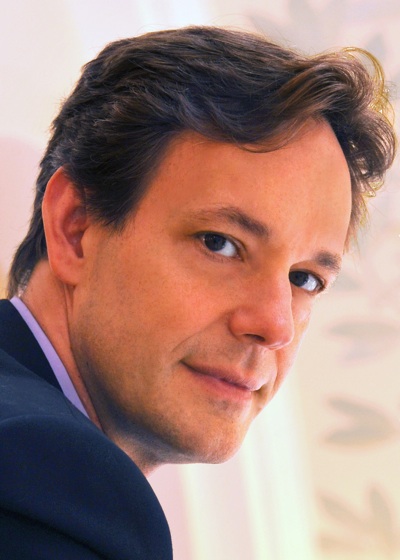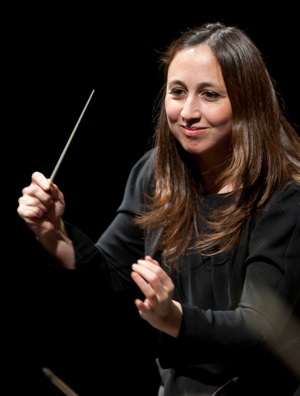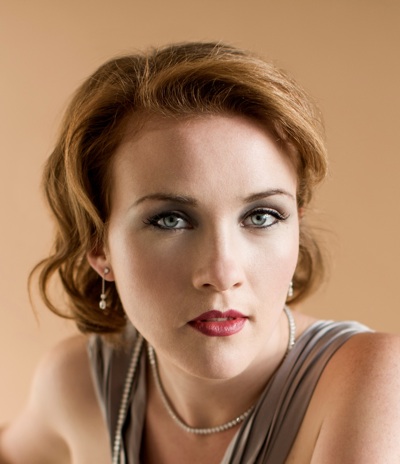The unsettling power of imagination

The stars were in alignment last Thursday at Zellerbach Hall, when the Berkeley Symphony performed the World Premiere of Jake Heggie’s Camille Claudel: Into the Fire. Led by the dynamic Joana Carneiro, the symphony was a perfect dance partner for mezzo-soprano soloist Sasha Cooke.
 But first they warmed up with Maurice Ravel’s Ma Mère l’Oye (Mother Goose Suite), a set of gently exotic works with the magical air of fairy tale. Ravel wrote these for two child musicians on pianos, and then later rewrote for full orchestra, a chance to translate his subtlety into a full palette of colors. Dreamy and impressionistic, it was also an opportunity for each section of the orchestra and many soloists to shine. Along with the principals, Shawn Jones delivered stern utterances on contrabassoon, Bennie Cottone was earnest and soothing on English horn and Stacey Pelinka was pensive with low flute notes and fiery on piccolo. Their comrades were delicate and alluring, accented with harp and celesta and a slippery violin solo by Franklyn D’Antonio.
But first they warmed up with Maurice Ravel’s Ma Mère l’Oye (Mother Goose Suite), a set of gently exotic works with the magical air of fairy tale. Ravel wrote these for two child musicians on pianos, and then later rewrote for full orchestra, a chance to translate his subtlety into a full palette of colors. Dreamy and impressionistic, it was also an opportunity for each section of the orchestra and many soloists to shine. Along with the principals, Shawn Jones delivered stern utterances on contrabassoon, Bennie Cottone was earnest and soothing on English horn and Stacey Pelinka was pensive with low flute notes and fiery on piccolo. Their comrades were delicate and alluring, accented with harp and celesta and a slippery violin solo by Franklyn D’Antonio.
After that French warm up, they were ready for Heggie’s lyricism and sense of color. Set to the poetry of his long-time librettist, Gene Scheer, Heggie wrote the music for mezzo and string quartet, and then later orchestrated it as a commission from the Berkeley Symphony. It opened with high sweet passages, and then Cooke entered with a rising fourth. Her wondrous sound was penetrating and earthy with high skipping notes, a rich stew that was startlingly agile even in the concrete vastness that is Zellerbach Hall.
Heggie writes beautifully for the voice, and his orchestration was also singularly effective, framing vocal leaps in bright colors. Combined with Scheer’s poetic and powerful text, this was truly a moment out of time.
Although mesmerizing, their subject was difficult. Camille Claudel was a promising French sculptor unable to solve the intransigencies of love and life. The long-time mistress and muse of sculptor Auguste Rodin (beginning when she was 17 and he 41), she was seldom recognized for her work during her lifetime. Her father was supportive of her throughout, but one week after his death Claudel’s mother and brother committed her to a mental institution, which is where she was doomed to spend the last thirty years of her life.
The texts were based on her sculptures.
Last night, I went to sleep completely naked.
I pretended you were holding me
But I woke alone again
Everything burned away
In the cruel morning light.
The second text was framed with the snaky hiss of sand paper against a blurry wealth of horns. “Where do I abide?” sang Cooke, mixing equal parts desire and anguish. Teasing colors of harp and marimba sparkled over shivers of violin.
 The third poem, “Shakuntala,” referred both to a Hindu legend and Claudel’s sculpture of it, where a woman is doomed to wander for twenty years after her husband, the King, is cursed to no longer recognize her. It was a mirror of her rejection by Rodin, and the most powerful part of the song cycle. Cooke’s chocolaty voice soared and “hiccupped,” between folk-like stanzas, then ended with long melismas and a cadenza like that of a violin concerto.
The third poem, “Shakuntala,” referred both to a Hindu legend and Claudel’s sculpture of it, where a woman is doomed to wander for twenty years after her husband, the King, is cursed to no longer recognize her. It was a mirror of her rejection by Rodin, and the most powerful part of the song cycle. Cooke’s chocolaty voice soared and “hiccupped,” between folk-like stanzas, then ended with long melismas and a cadenza like that of a violin concerto.
The orchestration was finely textured, with English horn winding around the voice like aged Gruyere and crisp pear – salty and dense over sweet and crisp. In other words, through some alchemy of texture and voice, this was something not just heard but felt and tasted, resonating in our own mouths.
Later, we heard vocal arpeggios and repeating string figures like those of Philip Glass, and even some awesome Celtic fiddling solos, again by D’Antonio.
After the intermission, they essayed Brahms’ legendary Symphony No. 4 in E minor. There were a lot of satisfying moments, from lush to electric, but there were also long passages taken too slowly to sustain. The strings, nonetheless, were strikingly clean and the solos were heartfelt and satisfying.
—Adam Broner
Photo top of Jake Heggie, photo by Ellen Appel; below or Joana Carneiro, photo by Dave Weiland; and bottom of Sasha Cooke, photo by Dario Acosta.
The Berkeley Symphony’s next concert will be a collaboration with the UC Berkeley Chorus, held at Zellerbach on April 30 at 8:00, and featuring choral parts from John Adams’ Death of Klinghoffer and Mozart’s timeless Requiem. More information available from their website at www.berkeleysymphony.org
